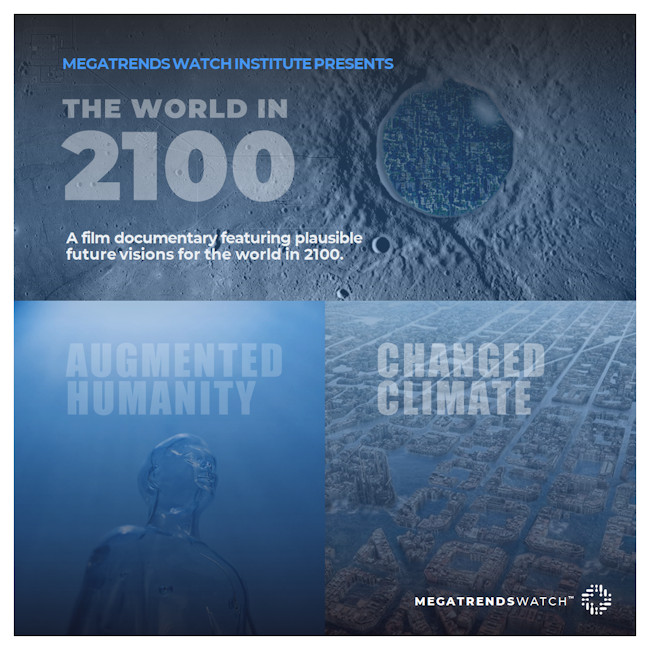World in 2100
What will the world look like by the end of the 21st century?
The future is a place in time where dreams and hopes reside, where all the infinite potentialities, possibilities, and probabilities coexist altogether just waiting to be uncovered by the present time.
In 1950, the world was home to 2.5 billion people —mostly rural. It was a world still recovering from the aftermath of World War II and entering into modernity. Television was in black and white. Flying was only for a few that could afford it, with just 31 million people traveling the skies. The silicon transistor was yet to be invented, and there were fewer than a dozen computers running in the world. Today, seventy-five years later, the world has 8 billion people —mostly urban. Flying is commonplace with airlines carrying over 5 billion passengers annually. Intelligent computers are in billions everywhere —inside smartphones, aircrafts, cars and dishwashers— connecting almost two-thirds of the global population. So what will the world look like within the next seventy-five years in 2100?
What will life be in the posthuman and transhuman future?
Humans have not stopped evolving naturally, however new technology breakthroughs are on the verge of steering human evolution artificially.

What will cities look like with 3°C degrees Celsius of warming?
Global temperatures are on track to increase by 3°C above pre-industrial levels by 2100, according to the UN Emissions Gap Report 2024.
World in 2100 | Documentary Series
The outcomes of our ongoing EARTH FUTURES research will be disseminated through two documentary projects: (1) a fact-based film documentary depicting the impacts of global megatrends upon society and environment, and (2) a thought-provoking docufiction film portraying the most plausible scenarios and alternative visions of humanity's future.
For partnerships, sponsorships, or other inquiries, please email us at: